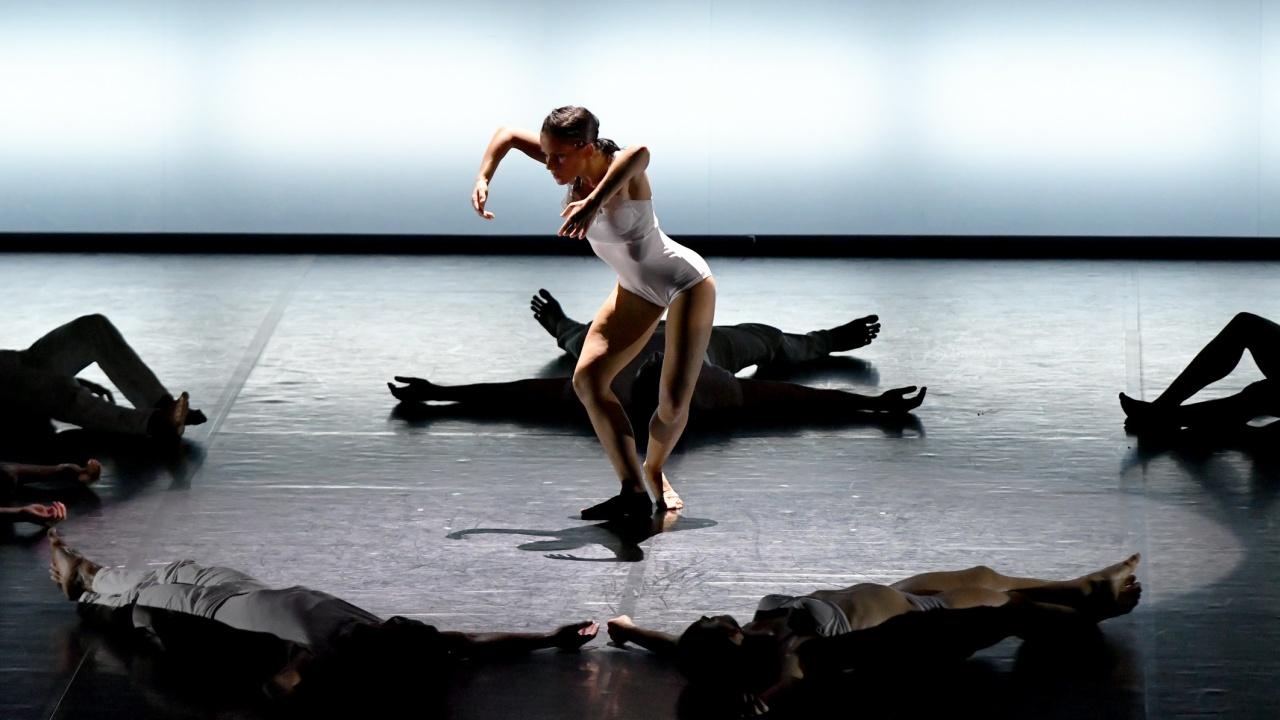Words by Giordana Patumi.
On Tuesday, February 18 at the Teatro Comunale Luciano Pavarotti in Modena, the Ballet Preljocaj, one of the most prestigious contemporary dance companies in Europe, presented the Italian premiere of its new creation Gravite. The new work of Franco-Albanian choreographer, Angelin Preljocaj, is an international co-production between Chaillot – Theatre national de la Danse – Paris, Les Theatre de la Ville de Luxembourg, Biennale de la danse de Lyon 2018 and Grand Theatre de Provence.
Preljocaj has marked the history of the past thirty years of dance. His choreographer’s vision, which draws on classical dance while giving it contemporary twists, has been one of the strong points of his success and has brought an innovative value to his pieces. Even in his narrative ballets, the choreographer has always been able to bring his reflection and sharp vision to the stories by transforming them into danced images.
The Latin word ‘gravitas’ means weight, gravity, as well as solemnity. It’s a double meaning which points to the atmosphere of what is serious and this phenomenon of terrestrial attraction that nails humans and any object to the ground.
The magnificent dancers defy gravity with their balances in attitudes played in slow-motion, engaging in the reproduction of precise and calibrated counterweights, as if seeking new forms of opposition to gravitational forces.
Some techniques, such as ballet, create the illusion that performers can escape ballet’s downward pull to soar; others harness gravity to anchor movement. Both paths are familiar to Preljocaj, who has worked extensively in the ballet world, yet favours a modern-inflected vocabulary. Exploring gravity’s effect on the body requires him to go back to basics. There is nowhere to hide in Gravite: the sets are limited to discreet background cut-outs and lighting, while Igor Chapurin’s form-fitting, black-and-white costumes emphasise the dancers’ lines (not always with flattering cuts).
For 80 minutes, the focus is entirely on the choreographer’s craft. This would be a daunting proposition for many, but Preljocaj brings remarkable self-possession to Gravite. He doesn’t rush. Towards the beginning and again at the end, a lone woman stands centre stage and slowly, deliberately allows her left leg to hover horizontally, before shifting her weight to extend the line with her arms. It’s a simple moment, yet one that returns to the core of a dancer’s craft: geometry in space.
There is a little of Merce Cunningham in the self-contained stillness of such moments in Gravite. Elsewhere, other influences crop up. Bach brings classical patterns and counterpoints. The patchwork score’s skipping between Shostakovich and Daft Punk (among others) isn’t exactly logical, but it does allow for variety. The ‘pas de deux’ with two couples side by side fell somewhat flat in comparison. The deceptive simplicity of Preljocaj’s steps is more rewarding when he leaves standard heterosexual dynamics behind. His kaleidoscopic take on Ravel’s Bolero, near the end of the piece, was startlingly good. Instead of giving in to the bombastic crescendo, 12 dancers remained tightly huddled in a circle, its shape expanding and contracting. It takes a cool head to keep such a tight rein on one of the most overused scores in ballet.
Beyond visual delight, Gravite draws the audience into the depths of existence. The piece struggles with the laws of nature and also those of mankind. Here, more than ever, the dancer gives substance to Baudelaire’s L’Albatrosas well as to Simone Weil’s magnificent title, Gravity and Grace. Preljocaj shows the irreconcilable duality of the human condition. Beyond words, the dance he deploys embodies the refusal of all resignation. It makes the chains of gravity its own, in order to break them in the grace of the ephemeral. Turns, jumps and balances are incomparable victories won by life over the immobility which inescapably lurks in front of it. A naked fragility that gives movement all its power, and a beauty that is always repeated.
Image: JC Carbonne.
